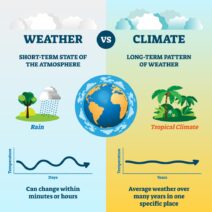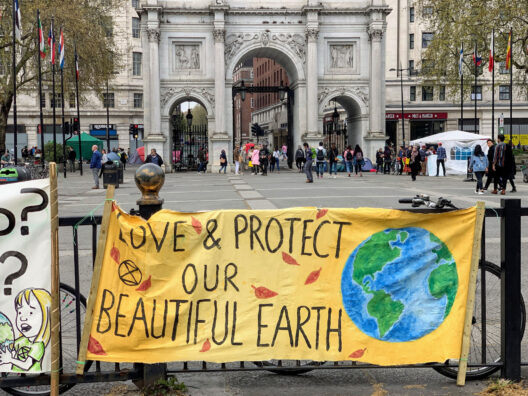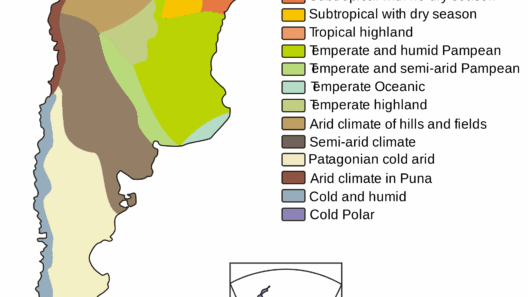Climate change has emerged as one of the most pressing environmental issues of our time, influencing a myriad of ecological and geological processes. This phenomenon, characterized by long-term shifts in temperatures and weather patterns, is primarily driven by human activities, particularly the combustion of fossil fuels, deforestation, and industrial processes. The impacts of climate change ripple through ecosystems and human societies alike, affecting biodiversity, weather events, sea levels, and more.
Understanding these intricate dynamics necessitates a closer examination of how climate change alters the environment in multifaceted ways.
Shifting Weather Patterns and Extreme Events
The observable impacts of climate change are far-reaching, with scientists documenting an increase in the frequency and intensity of severe weather phenomena. Storms, hurricanes, droughts, and floods have become more prevalent, posing significant threats to both natural ecosystems and human settlements. This climatic volatility is largely attributed to rising global temperatures, prompting the atmosphere to hold more moisture and resulting in heavier precipitation during storms. On the flip side, areas can experience prolonged droughts, leading to water scarcity and ruining crop yields.
Moreover, changes in weather patterns can disrupt local ecosystems. For instance, extended dry spells affect plant and animal life, causing shifts in species distribution as they search for more suitable habitats. This issue is exacerbated for certain species that cannot adapt quickly enough to the changing environment, resulting in loss of biodiversity. A decrease in biodiversity, in turn, compromises the resilience of ecosystems, making them less capable of withstanding additional environmental pressures.
Rising Sea Levels and Coastal Erosion
One of the most significant threats posed by climate change is the rising sea levels caused by the melting of glaciers and ice caps, as well as the thermal expansion of seawater. Coastal communities across the globe are at risk from inundation, which can lead to habitat destruction, loss of arable land, and accelerated coastal erosion. This phenomenon displaces populations and imperils livelihoods, particularly in regions dependent on agriculture and fishing.
As sea levels rise, saltwater intrusion into freshwater systems becomes more pronounced, further exacerbating water scarcity in coastal regions. Aquifers are compromised, devastating agricultural practices and leading to significant socio-economic stress. Communities that historically thrived near coastlines are increasingly forced to adapt or relocate, prompting complex challenges associated with migration and resource management.
Impact on Biodiversity and Ecosystem Services
Climate change significantly affects biodiversity, with ecosystems experiencing shifts in species compositions, inter-species relationships, and overall health. Temperature changes can disrupt the phenological cycles of plants and animals, such as blooming and breeding periods. As a result, mismatches occur in the timing of biological events, which can have cascading effects on food webs. Pollinators like bees may find that the flowers they depend upon do not bloom in synchronization with their activity patterns, endangering both their populations and the plants that rely on them.
Moreover, shifts in climate invite invasive species that thrive in altered conditions. These intruders can outcompete native species for resources, further diminishing biodiversity. The loss of biodiversity has dire implications, as it compromises the ecosystems’ ability to provide essential services, which include pollination, water purification, and climate regulation. Healthy ecosystems are foundational to human well-being, ensuring that clean air and water are available, food systems are stable, and natural resources are sustainable.
Forests Under Siege: A Climate Crisis
Forests serve as vital carbon sinks, sequestering substantial quantities of carbon dioxide and playing a crucial role in mitigating climate change. However, they are increasingly at risk due to climate-related stressors such as wildfires, pests, and diseases that flourish in altered climatic conditions. Higher temperatures and changing precipitation patterns create prime conditions for wildfires, which not only devastate vast forested areas but also emit significant greenhouse gases, further exacerbating the climate crisis.
The fragility of forest ecosystems is evident as species that rely on specific climatic conditions face extinction. The loss of these habitats has ripple effects throughout the food web, influencing not only flora and fauna but also human populations that depend on these ecosystems for their livelihoods. The degradation of forests also disrupts the microclimates within which numerous species exist, contributing to the decline of biodiversity.
Adaptation and Resilience: Navigating Changes
In light of these daunting prospects, adaptation strategies are essential for mitigating the impacts of climate change on the environment. Conservation efforts that promote biodiversity and resilience must be prioritized, alongside sustainable practices that reduce carbon footprints. Innovations in renewable energy, sustainable agriculture, and effective waste management can mitigate the adverse effects of climate change while promoting ecological health.
Communities must develop frameworks that allow for resilience against climate-related disruptions. This may involve restoring natural habitats, creating green infrastructure in urban areas, and implementing adaptive agricultural practices that are better suited to changing climatic conditions. Educating populations about the importance of biodiversity and sustainable practices can cultivate a culture of environmental stewardship that empowers individuals to take action.
In conclusion, climate change fundamentally alters the environmental landscape, presenting serious challenges that extend beyond simple weather variations. Addressing these issues requires comprehensive strategies that acknowledge the interconnectedness of ecosystems and human societies. By fostering resilience and promoting sustainable practices, there is potential to navigate the adverse effects of climate change, ensuring that both our planet and our communities can thrive amidst a changing climate.





